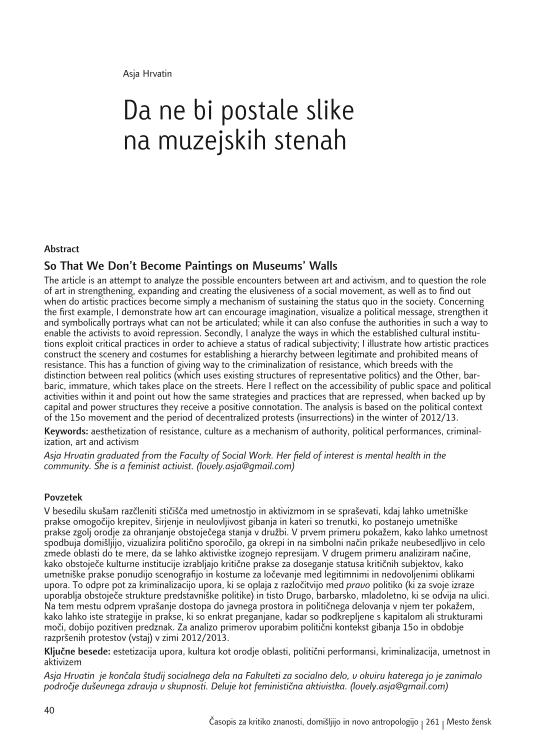The article is an attempt to analyze the possible encounters between art and activism, and to question the role of art in strengthening, expanding and creating the elusiveness of a social movement, as well as to find out when do artistic practices become simply a mechanism of sustaining the status quo in the society. Concerning the first example, I demonstrate how art can encourage imagination, visualize a political message, strengthen it and symbolically portrays what can not be articulated; while it can also confuse the authorities in such a way to enable the activists to avoid repression. Secondly, I analyze the ways in which the established cultural institutions exploit critical practices in order to achieve a status of radical subjectivity; I illustrate how artistic practices construct the scenery and costumes for establishing a hierarchy between legitimate and prohibited means of resistance. This has a function of giving way to the criminalization of resistance, which breeds with the distinction between real politics (which uses existing structures of representative politics) and the Other, barbaric, immature, which takes place on the streets. Here I reflect on the accessibility of public space and political activities within it and point out how the same strategies and practices that are repressed, when backed up by capital and power structures they receive a positive connotation. The analysis is based on the political context of the 15o movement and the period of decentralized protests (insurrections) in the winter of 2012/13.




